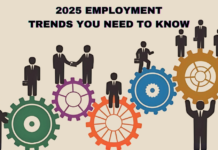Virtual reality (VR) has emerged as a revolutionary technology that has the power to fundamentally alter the way that education is provided. Virtual reality (VR) breaks free from the limitations of the traditional classroom by immersing students in realistic, three-dimensional environments and offering incredibly successful, interactive, and transforming learning experiences. With virtual reality (VR) becoming more and more accepted in educational institutions, both teachers and students are witnessing its profound influence on the teaching and learning process. This essay looks at how virtual reality is becoming more popular in classrooms and how it is changing the way people learn.
Enhanced Learning Engagement:
One of the main educational benefits of VR is that it can increase learner engagement. It is often challenging to maintain pupils’ attention and interest while using standard teaching methods. Conversely, students become engrossed and become active participants in the learning process due to VR’s immersive quality. By exploring ancient civilizations, participating in virtual science experiments, or exploring the human body, students can learn material in a more engaging and memorable way.
Experiential Education Possibilities:
VR makes learning more engaging by providing opportunities for immersive learning. Through time and space travel, students can see historical events or visit far-off places that they might not have otherwise been able to visit. This experiential approach fosters more empathy and understanding in pupils because they may put themselves in other people’s shoes and see the world from different perspectives.
Personalized Learning Paths:
VR allows for more tailored instruction. Pupils can work on assignments that match their skill levels and progress at their own pace. It is possible to modify the course material to fit each student’s interests, learning style, and strengths. Learning is enhanced as a result of teachers being better equipped to address the diverse needs of their students.
Safe and Controlled Learning Environment:
In some fields, including medicine, aviation, or hazardous industries, virtual reality (VR) offers students a secure and regulated learning environment where they may practice skills without worrying about the consequences in the real world. Pilots may practice landings and take offs, engineers can fix machinery, and medical students can rehearse procedures all in a risk-free setting.
Opportunities for Collaborative Learning:
Cooperative learning activities are also supported by VR. Students from different parts of the world can connect, talk, and work together within the same virtual space. This role promotes cooperation, problem-solving, and cross-cultural understanding to help students prepare for a globalized future.
Accessible Education:
Virtual reality could help students who have varying degrees of access to educational materials communicate more successfully. Virtual reality (VR) offers students from remote or underprivileged locations access to excellent educational experiences and content, democratizing education in some aspects.
Motivation and Retention:
Virtual reality encounters can create a lasting impression on students because of their immersive and memorable properties. The educational experience can become more joyful and meaningful as a result of this heightened interest, which can also improve learning motivation and information retention.
Conclusion:
With virtual reality becoming more prevalent in education, we now approach teaching and learning very differently. Virtual reality (VR) creates opportunities for immersive and interactive learning, pushing students to engage more fully in the learning process by upending traditional educational paradigms. Despite continuous challenges with cost and content development, virtual reality (VR) has the undeniable potential to change education and create life-changing learning experiences. As VR technology develops further, educators, legislators, and inventors must collaborate to ensure that it becomes an essential part of the learning environment and reaches its full potential for future generations of students.






